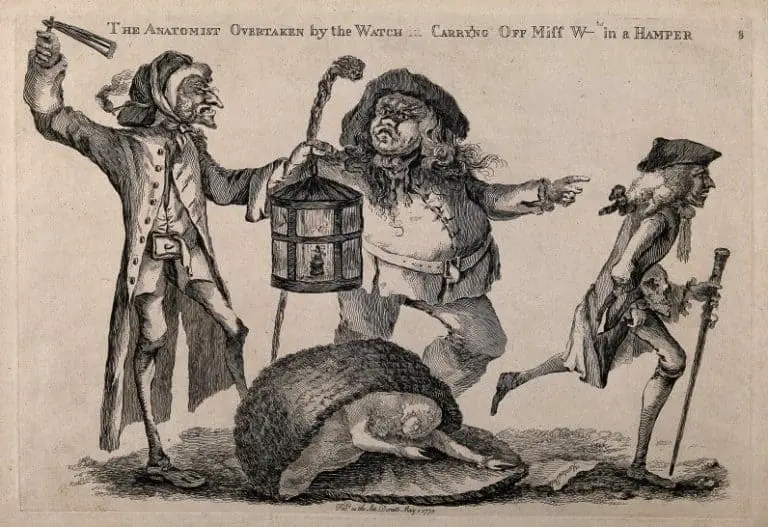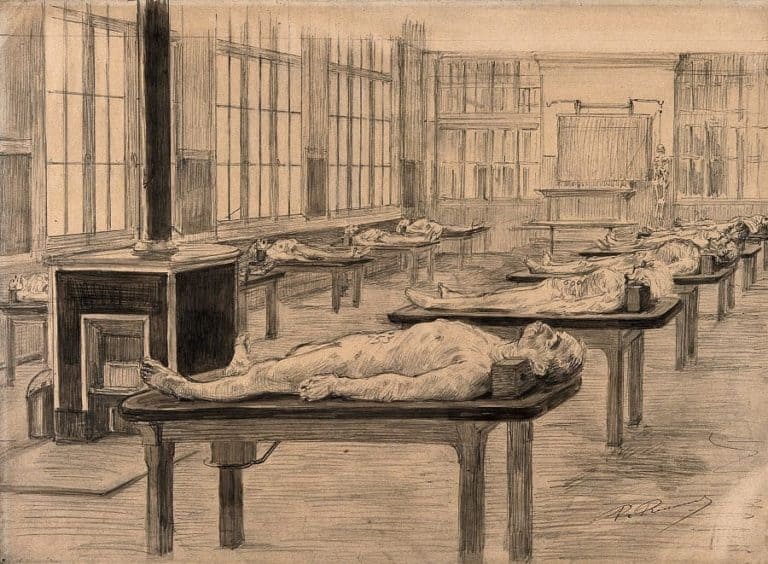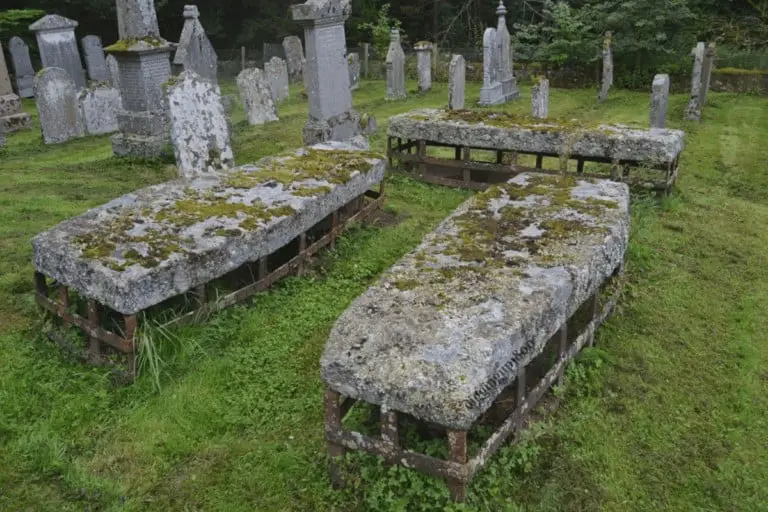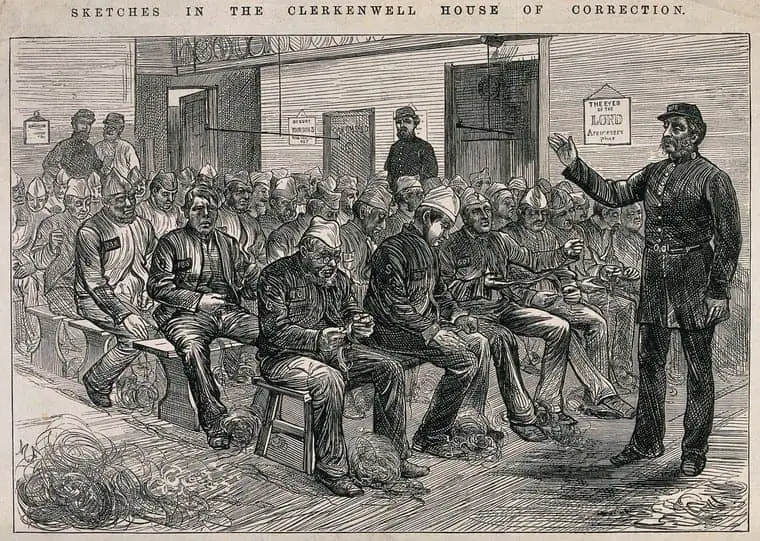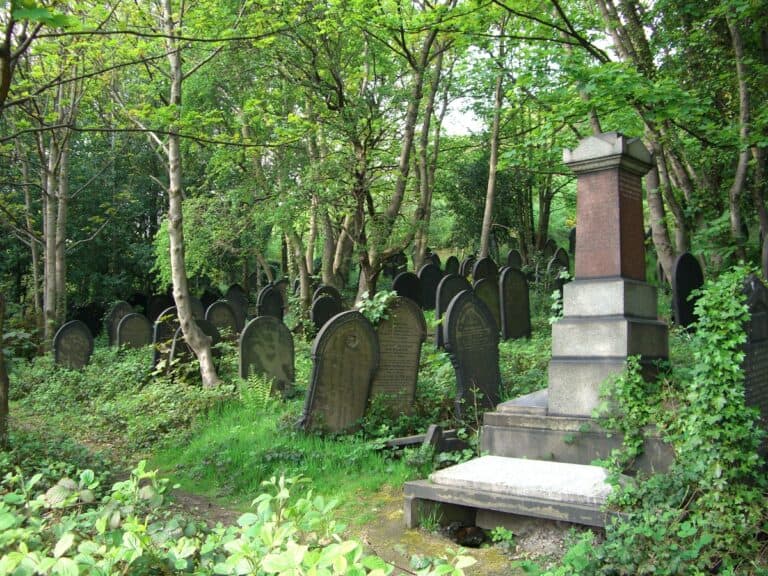Protecting Scotland’s Dead | A Detailed History of the Mortsafe
Throughout the churchyards of Scotland, and occasionally England, lie a number of unique reminders of body snatching history.
Iron cages or frames that have been placed over seemingly random graves all differing in design, and size yet all adding their own unique character to the churchyard and giving a reminder of a darker side to Britain’s history.
But what exactly are they and why do some churchyards have them and not others?

Correctly known as mortsafes, these iron cages or frames would have been placed over recently dug graves to protect the inhabitants from being stolen by body snatchers. Dating from around 1816, they were often crafted into the shape of a coffin and varied in design; clamped around the coffin like a cage working as a solid sheaf of iron lowered over the coffin as a barrier.
Anti body snatching prevention had already been thought of by the time the mortsafe developed, although this was rather rudimentary and the need for cadavers for the anatomy schools was forever constant and body snatchers could be relentless.
Development of the Mortsafe
I’ve talked about watch houses and other types of prevention, such as the caged lair and watch houses but this next invention was hoped to offer a different level of protection against the body snatcher.
Before the demand from anatomy schools increased and the number of dead bodies required saw graveyards being targeted on a more frequent basis, parishes used simpler resources to protect their dead.
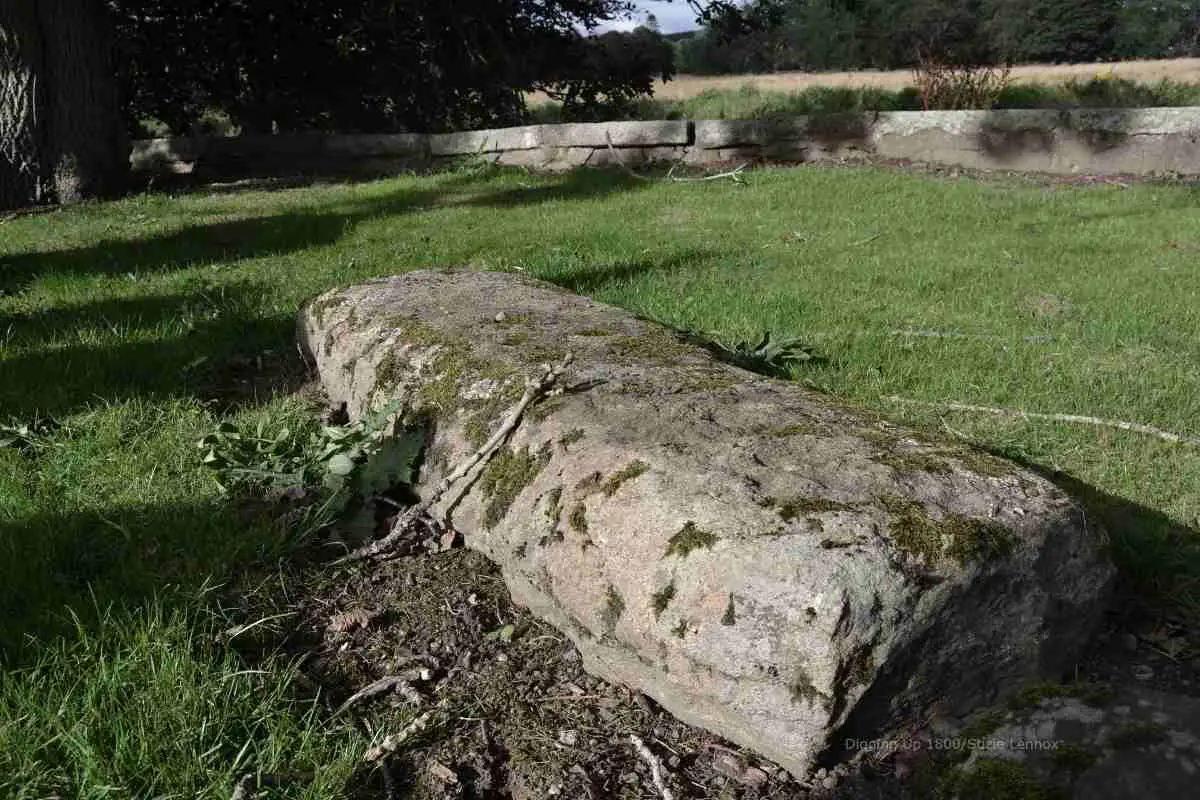
With the mortstone, seen above, which was essentially a heavy lump of rock, the body snatchers soon developed new ideas of accessing the corpse.
They dug down at the narrow ends of the mortstone, accessing the cadaver through the side of the coffin rather than breaking open the lid. This way the corpse could be easily removed without the need to lift the stone or cause suspicion that the grave had been tampered with.
They would simply fill in the hole again after they’d pulled out the cadaver using hooks and ropes.
A once perfectly adequate deterrent, the mortstone was quickly becoming ineffective.
Designing A Mortsafe
In desperation, and to try to remain one step ahead of the resurrection men, parishes started to develop what we now call a mortsafe. Essentially an iron ‘safe’ that fitted over and around the coffin.
Unique to Scotland, there was no prototype or template which the local blacksmith could follow. Unlike watch towers or watch houses where we can see clear similarities, here, parishes were left to their own devices.
And yet despite this, there are a number of examples that can be collated together into one style or design.
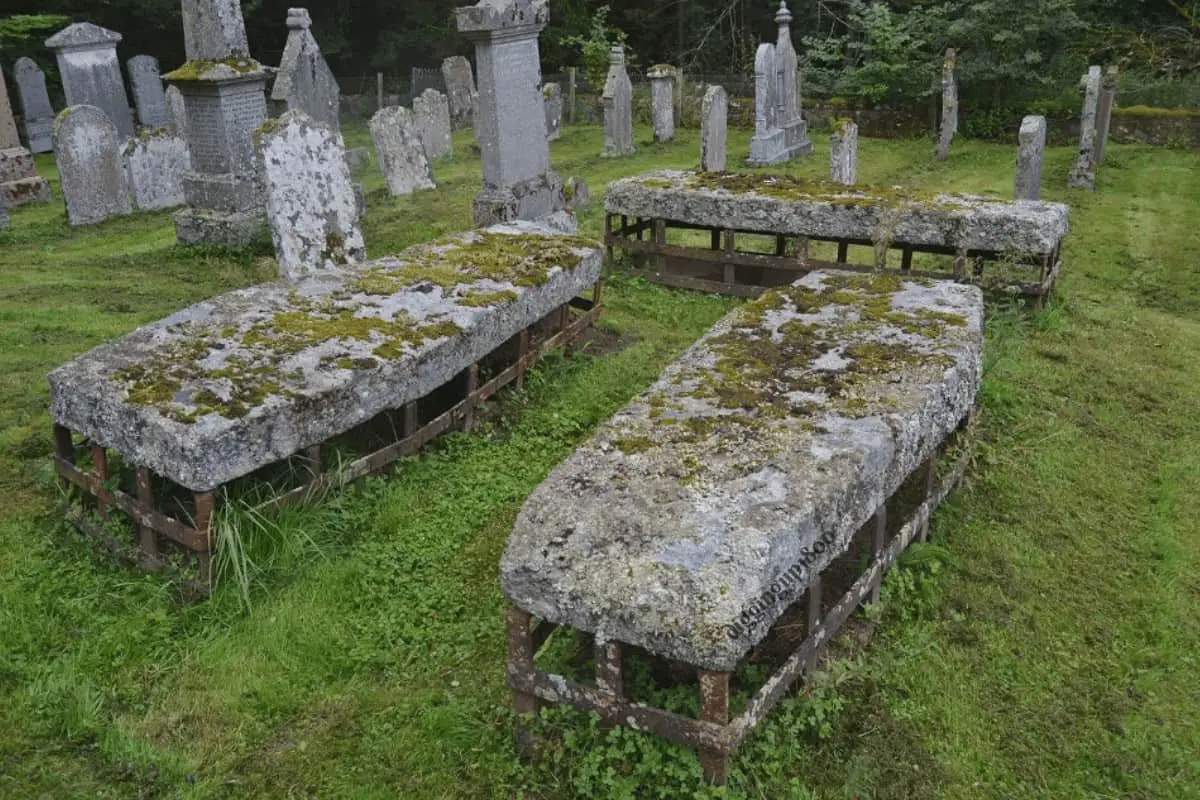
This design consisted of an iron framework fastened to the underside of a mortstone which in turn created a ‘curtain’ or iron frame that would have been pushed about 18 inches into the ground around the coffin.
Superb examples, specific to the Aberdeenshire area, can be seen in the image above at Cluny where there are four examples of the same design clustered together on a small mound in the churchyard.
Other examples can be found at Kirkton of Skene, Kinnernire and Towie – this latter example lying on its back so that you can see the iron ‘skirt’ in full detail.
The Different Types of Mortsafe
Predominantly, two styles started emerging around 1819/1820. The grand designs that were commissioned by individuals and a simpler parish mortsafe was also produced, hired out for several weeks at a time until the corpse of your relative was no longer fresh.
The parish offering developed into a number of different styles, some even just consisting of a few rods of metal. The majority produced, however, were of a more robust nature and the style that dominates is perhaps the frame like design which clamped around the coffin.
It was common for parishes to establish a mortsafe society, a subscription service where parishioners could benefit from hiring out body snatching prevention for around a shilling a day when it was required.
After it had been left in situ for about 6 weeks, just long enough for the cadaver to no longer be of any interest to the surgeons, it would be removed ready for the next subscriber.
The Ayr Mortsafe
The example at Ayr, pictured below, dates from 1816 and hangs proudly in the lych gate of Ayr church giving a stark reminder that the resurrection men regularly visited the kirkyard.
This superb example shows how the two halves would have worked together.
The lower half of this example, hanging on the opposite wall of the lych gate, has holes around the edge where rods would have been inserted and driven into the ground providing another level of security.
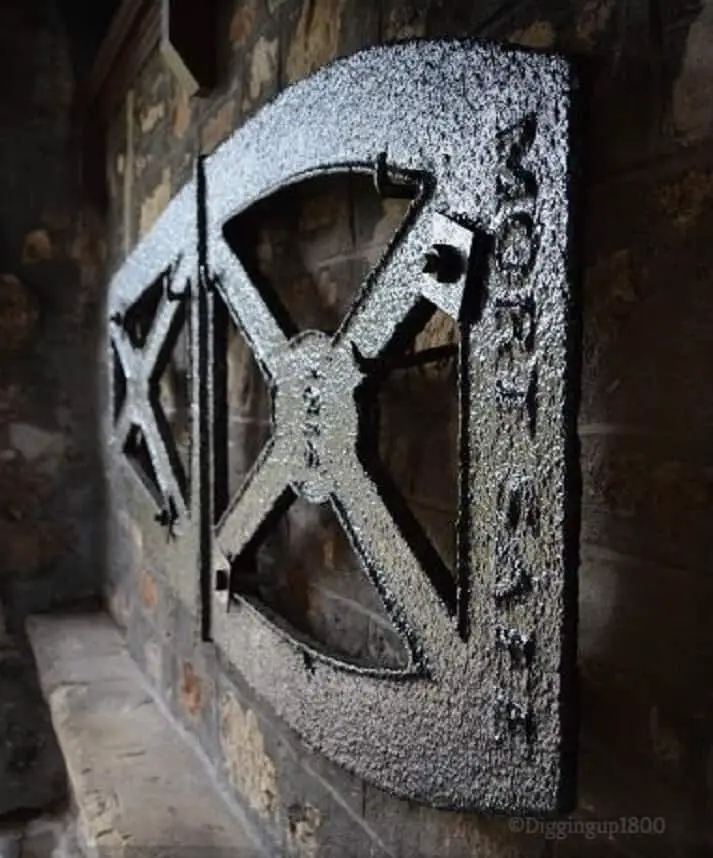
Other examples of this style can be found at Linlithgow and Alloway Auld Kirk, although Linlithgow’s is a little worse for wear now.
Body Snatching Prevention at Bolton, East Lothian
But perhaps the finest example of all to have survived in this style is one which hangs in the church porch in Bolton, East Lothian.
Complete with iron rods and specially designed nuts and spanners, we can see first hand how this design worked. Small groves or notches were incorporated into the edges of the nuts and could only be opened with the correct corresponding spanner.
These bespoke spanners were made to fit these nuts exactly, adding yet another level of security to the device. In all, 28 rods were driven into the ground after the mortsafe was placed over the coffin.
The rods covered the side of the coffin preventing access. In reality, once the body snatcher saw the device, they would probably have looked elsewhere for their subjects.

Examples At Glasgow Cathedral
Although Glasgow Cathedral is dominated by caged lairs, there is just one mortsafe that, last time I was there, could be seen lurking beneath the undergrowth.
This privately purchased example, made to keep the remains of Maria Macaulay safe in 1849, is a relatively late commission and shows how sturdy and robust some of these devices could actually be.
The Anatomy Act, passed some 17 years previously in 1832 had promised to put an end to body snatching, but it is clear that fear still raged on within the local communities and certainly in Maria’s family.
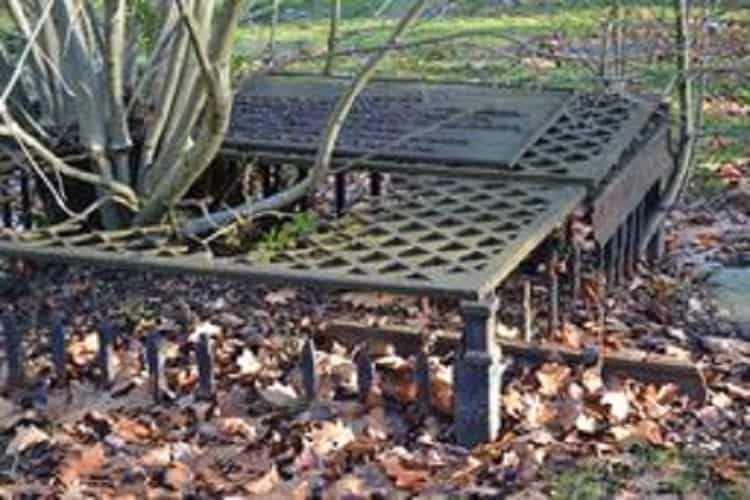
The ‘Iron Cages’ at Logierait
There are a number of mortsafes in situ that look like mini caged lairs. The elaborate examples below can be found at Logierait, Perth & Kinross which since their discovery, have been set in cement in their current position.
As soon as you enter the churchyard here at Logierait, you don’t have to look far to see these three impressive relics from the past.
They are surrounded by a small stone enclosure and are located right next to the church itself.
They comprise two adults and one child’s mortsafe. For many, this first sighting can be very disturbing, mainly because the group appears to be for a family, sleeping in eternal peace forever.
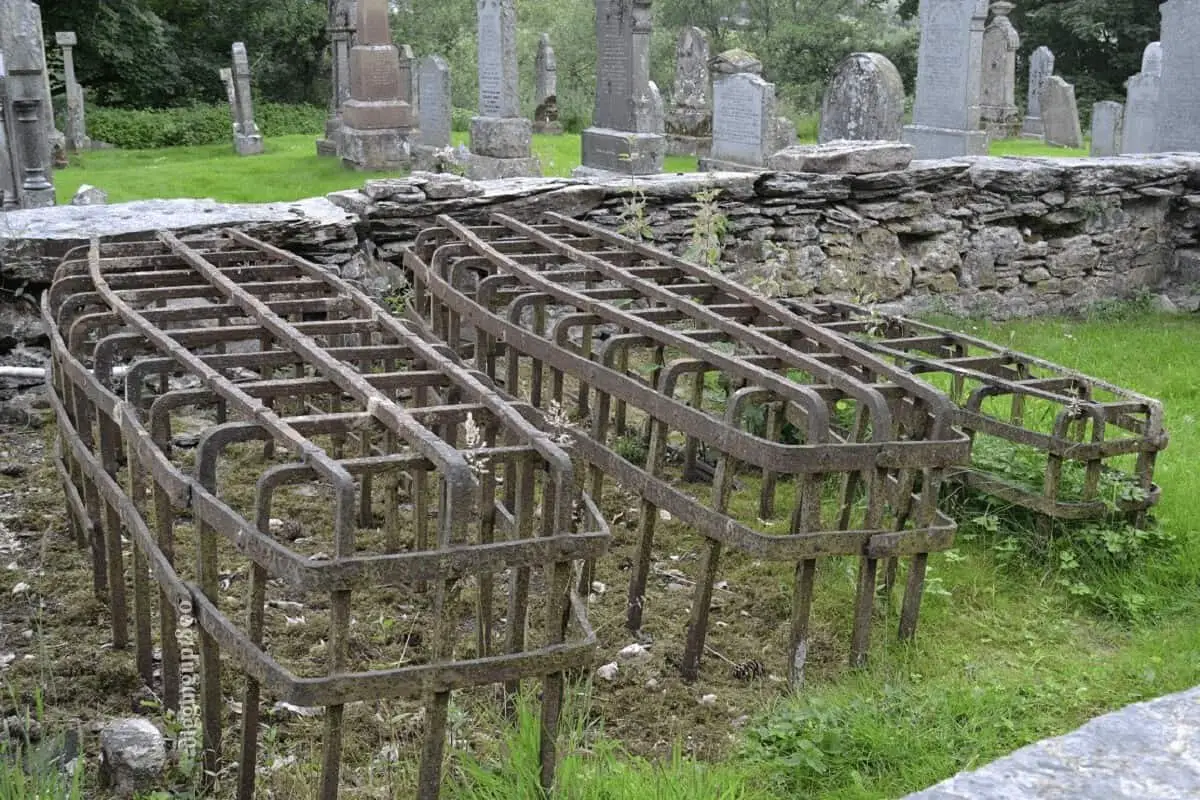
The Solid Iron Mortsafes at Aberfoyle
There is a different type of mortsafe that would have slipped over the top of the wooden coffin rather than clamp around it like a cage as in the examples above.
There are some very fine examples of this ‘sheaf’ like style dotted around Scotland; Colinton nr. Edinburgh and Banchory-Devenick in Aberdeenshire are both easily found as is the iron coffin at Kirkton of Durris which was once used as a water trough for a farmer’s cattle before it was discovered and removed to the churchyard where it can be seen now.
But for me, the most striking examples of this style of mortsafe can be found at Aberfoyle in Stirlingshire which are displayed either side of the doorway to the former church.
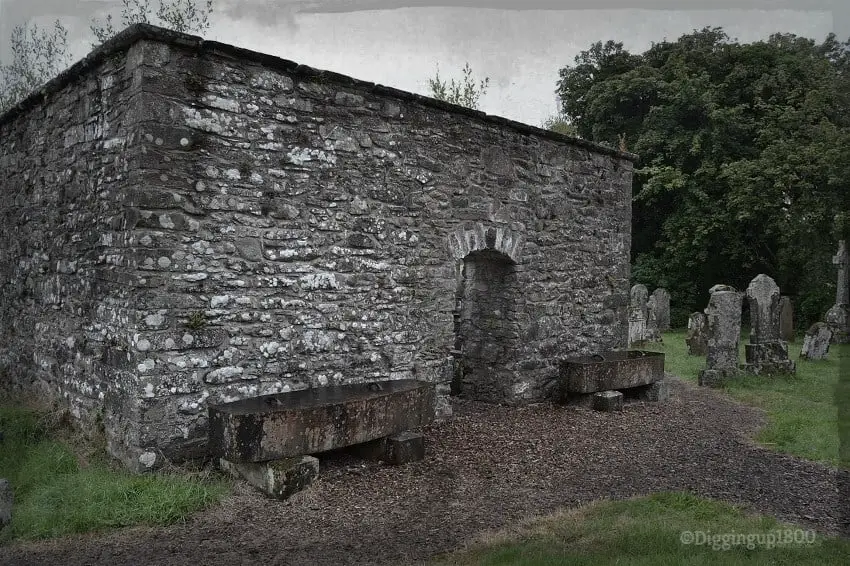
The thick iron handles of these mortsafes, omitted from the examples found at Colinton and Banchory, and indeed Durris, show just how thick and heavy these mortsafes would have been.
In all instances, they would have been lowered over the grave or coffin using what was known as mortsafe tackle; a series of hooks and chains hanging from a tripod that would have been attached to the mortsafe for easier movement.
The end of the mortsafe
What happened to these iron frames once the body snatcher had put down his tools and the Anatomy Act had been passed?
By the mid-1850’s the threat from the body snatchers had subsided to the extent where mortsafe societies were starting to disband and their mortsafes were being advertised as scrap metal.
As societies folded, any monies left were often used to make repairs in the churchyard itself or in one instance I’ve found, to finally help repair the parish clock.
The scrap metal drives of WWII also saw a large number of these relics disappear, and so those that have remained have become more poignant in representing the darker side of our churchyard history.
Researching Mortsafes
I have not covered all of the mortsafes that can be found within Scotland on this post, yet there are many that could easily have made the ‘cut’ so to speak.
The ‘Double Bedder’ mortsafes for example that are now such a famous part of Greyfriars Kirkyard in Edinburgh have been left out intentionally, preferring to give the lesser known relics a spot in the limelight instead.
The history behind the mortsafes that I have included here has come from researching local histories and from countless hours on the British Newspaper Archive website.
Perhaps the most valuable resource that we have from Aberdeenshire mortsafes and other body snatching relics found within that country is a two-part paper by James Ritchie written in 1920 which can be accessed online for free here

